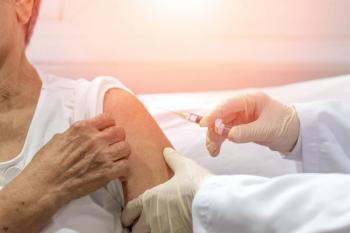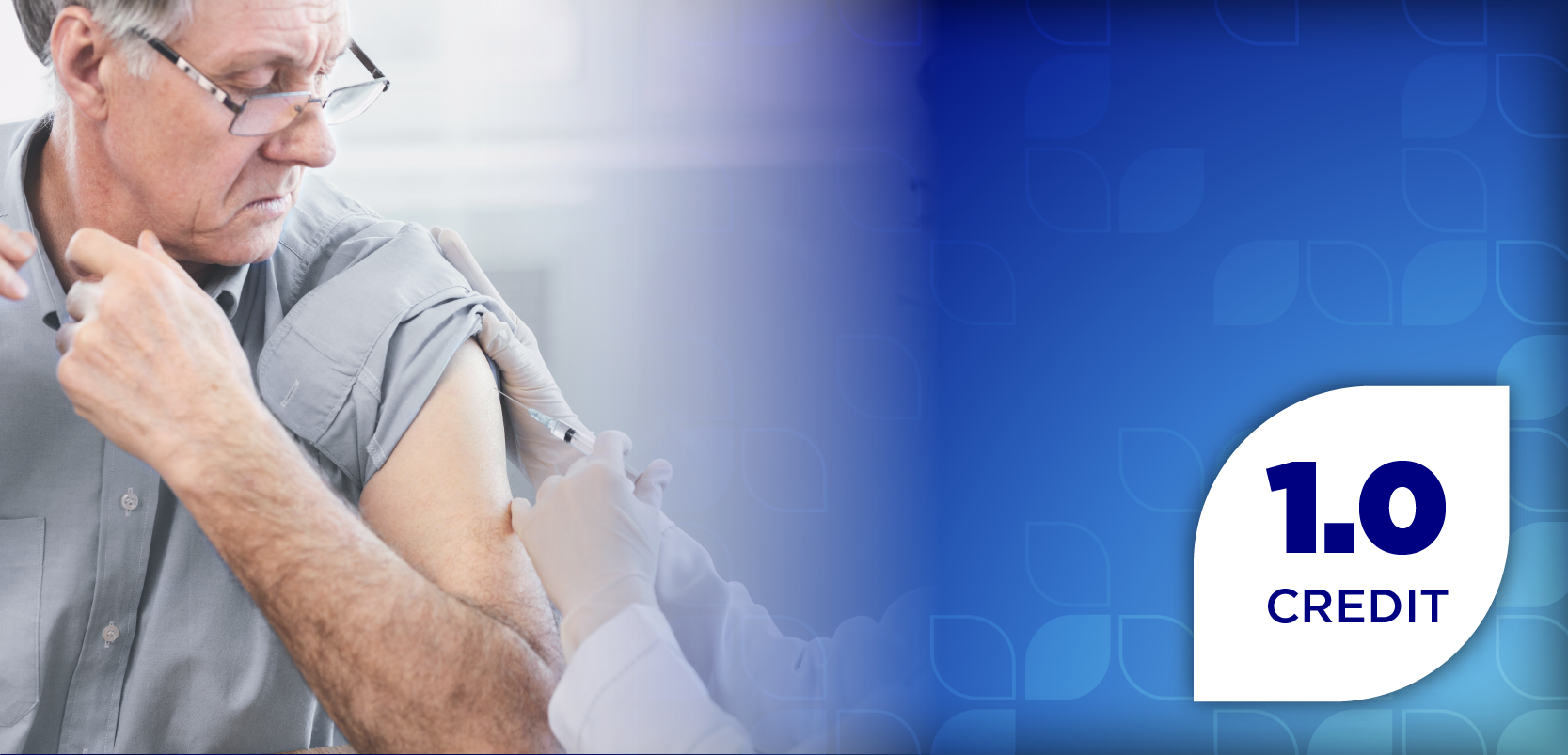
Pneumococcal Vaccine Rates for Black Adults Significantly Higher Than White Adults
Key Takeaways
- NH Black adults show higher pneumococcal vaccine uptake than NH white adults, despite similar sociodemographic and chronic disease factors.
- Socioeconomic status and disease burden do not fully explain racial disparities in pneumococcal vaccination rates.
Study findings highlight the need for further exploration into the racial and ethnic trends of pneumococcal vaccination rates.
Non-Hispanic (NH) Black adults reported significantly higher chances of receiving a pneumococcal vaccine than white patients despite either group’s sociodemographic characteristics or chronic disease burden. Highlighting consistently prominent vaccine disparities, the researchers’ findings emphasize the importance of expanding programs that address racial gaps.
“Disparities in vaccination rates across the lifespan are well-documented for many vaccines, including those for influenza, COVID-19, and shingles. Black and Hispanic individuals are consistently found to have lower vaccination rates compared to their NH white counterparts,” wrote authors of the study, published in Vaccine: X.1 “Income, educational attainment, health insurance type, and other factors are observed to have an impact on vaccine receipt and disparities, but differences in vaccination rates are likely not entirely attributable to these.”
When it comes to policymakers crafting vaccine-related laws and providers promoting the importance of immunization, socioeconomic status (SES) is a crucial factor that needs to be considered.
READ MORE:
Indeed, as the researchers mentioned, previous studies have reported on SES and how it impacts vaccine uptake. According to a study published in PLoS One, level of education among patients’ SES was frequently mentioned as a factor influencing vaccine uptake. However, these findings were not entirely attributable to one factor, leading researchers of both studies to agree on the complexities of associating SES with vaccine uptake.2
Vaccination Rates Among Minority Groups
For Black patients specifically, they expressed significant COVID-19 vaccine hesitancy due to poor interactions with providers and general distrust in the health care system.3 Furthermore, reports spanning from 2020 to 2024 showed that Black Americans were less likely to receive flu vaccines, the human papillomavirus vaccine, and childhood vaccines compared with NH white patients.4
Despite these common and well-known inequities, there are still surprising trends that have led researchers to further explore the racial and ethnic factors driving vaccine uptake. For example, with pneumococcal vaccines, NH Black patients often report greater uptake than their NH white counterparts.1
Amid these conflicting trends and complex disparities, researchers of the current study aimed to explore the factors leading to pneumococcal conjugate vaccine (PCV) or pneumococcal polysaccharide vaccine (PPSV) uptake among races and ethnicities.
Pneumococcal Vaccine Rates from the All of Us Dataset
“This work aims to explore the disparities related to PCV/PPSV among different demographic groups, with a specific focus on racial/ethnic disparities, age, and chronic disease and multimorbidity status,” they continued.1 “We evaluated differences in rates of pneumococcal vaccine indications and odds of vaccine receipt before age 65 across racial/ethnic groups.”
In their exploration of pneumococcal vaccine rates and their racial/ethnic patterns, researchers utilized the National Institutes of Health All of Us database—a data resource used in precision medicine to better understand the racial, cultural, and genetic backgrounds of American patients.
All participants included in the study were at least 18 years old and had at least 1 chronic condition indicated for PCV or PPSV administration. Vaccination was defined as at least 1 dose of PCV or PPSV recorded in the electronic health record between the ages of 18 and 64.
Overall, the analysis included 87,005 patients (mean age, 54.5 years; 59.8% women; 64.3% NH white). Aligning with previous evidence on pneumococcal vaccines specifically, NH Black patients reported the highest vaccine rates (18.8%) by race, followed by NH white patients (17.1%), Hispanic (13.2%), and Asian (12.5%). Furthermore, when solely comparing minority vaccination rates with NH white patients, Black individuals exhibited higher chances of receiving vaccination, while Hispanic patients showed lower odds.1
“The current study found NH-Black participants in the All of Us dataset have slightly higher odds of receiving any pneumococcal vaccine than their NH-White counterparts,” they wrote. “This indicates that demographics, SES, and cumulative disease burden do not fully explain greater than equal PCV/PPSV prevalence among NH-Black participants in this sample. This difference is not large, but it is clinically and epidemiologically meaningful.”
Opportunities for Pharmacists in Administering PCV, PPSV
Indeed, as the data show, continued complexities exist when it comes to the racial/ethnic factors influencing vaccine uptake. While this provides proof that racial disparities need to be further addressed, it also highlights the opportunities for pharmacists to be a useful resource in boosting vaccination rates. With pharmacists’ knowledge on vaccinations as well as their expertise in managing personal patient relationships, they may be a key entity in reversing poor vaccination rates for pneumococcal diseases and beyond.
“The analysis highlights the complex and multifactorial nature of vaccine disparities, as well as the limitations of existing datasets in fully capturing immunization behavior,” the authors concluded.1 “Despite its constraints, the All of Us dataset provides valuable insights into immunization disparities and clarifies future directions for qualitative and mixed-methods research to understand the social and perceptual drivers of pneumococcal vaccination across racial and ethnic groups. Expanding such efforts will be essential for a more complete understanding of disparities developing more equitable and effective vaccine delivery strategies.”
To celebrate World Pneumonia Day, as well as pharmacists’ roles in administering vaccines and managing patients’ disease complications,
Are you ready to elevate your pharmacy practice? Sign up today for our
REFERENCES
1. Sohail S, Wang J, Ng DQ, et al. Effect of chronic disease rates and diagnoses on young adult pneumococcal vaccination status in the All of Us database. Vaccine: X. 2025;27:100741. https://doi.org/10.1016/j.jvacx.2025.100741
2. Sacre A, Bambra C, Wildman JM, et al. Socioeconomic inequalities in vaccine uptake: a global umbrella review. PLoS One. 2023 Dec 13;18(12):e0294688. doi: 10.1371/journal.pone.0294688.
3. Ober H. Black Americans’ COVID vaccine hesitancy stems more from today’s inequities than historical ones. UCLA. October 27, 2022. Accessed November 12, 2025. https://newsroom.ucla.edu/releases/causes-of-covid-vaccine-hesitancy-among-black-americans
4. Immunizations and Black/African Americans. US Department of Health and Human Services Office of Minority Health. February 2025. Accessed November 12, 2025. https://minorityhealth.hhs.gov/immunizations-and-blackafrican-americans
Newsletter
Pharmacy practice is always changing. Stay ahead of the curve with the Drug Topics newsletter and get the latest drug information, industry trends, and patient care tips.





















































































































































